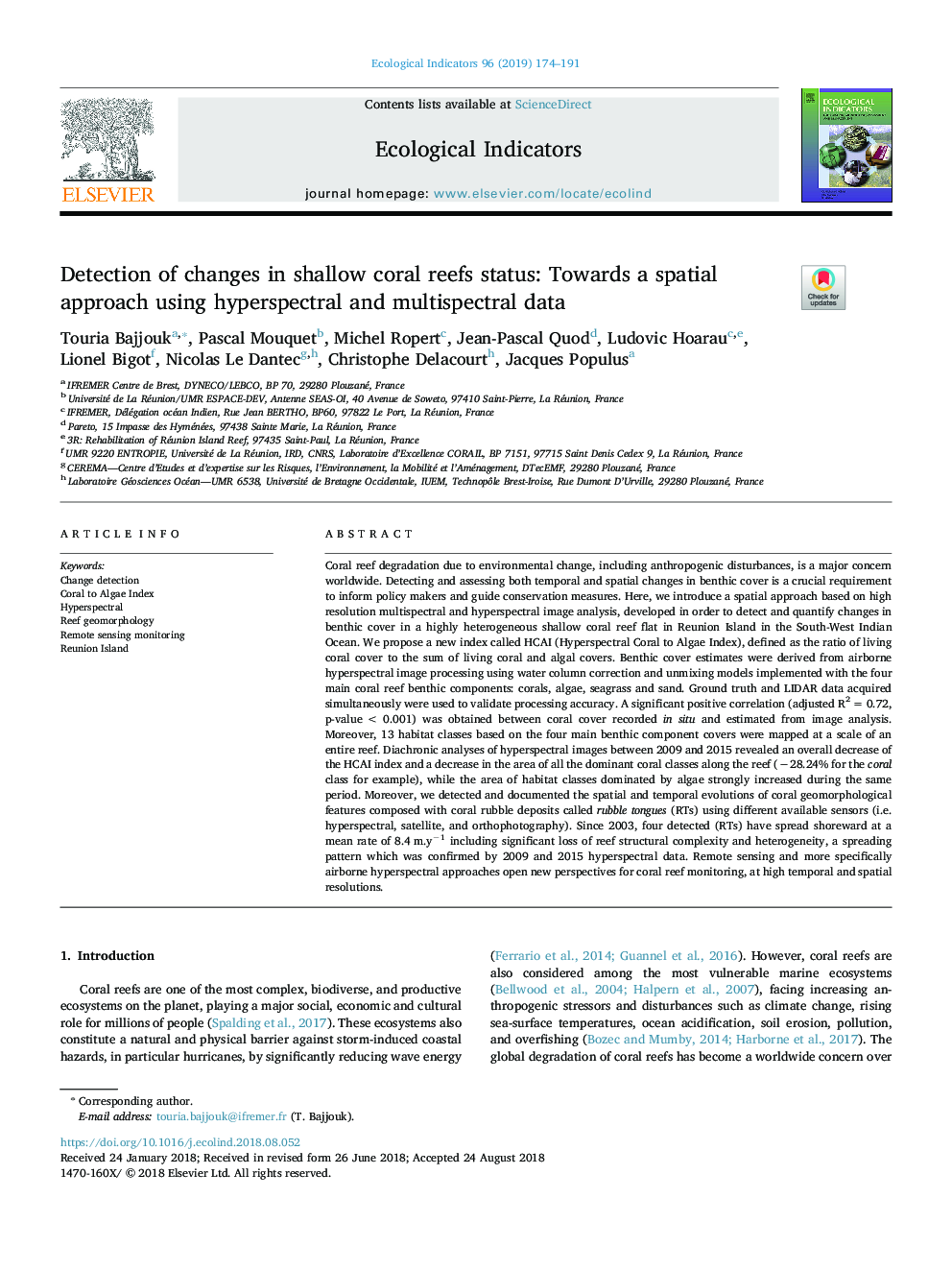| Article ID | Journal | Published Year | Pages | File Type |
|---|---|---|---|---|
| 10144210 | Ecological Indicators | 2019 | 18 Pages |
Abstract
Coral reef degradation due to environmental change, including anthropogenic disturbances, is a major concern worldwide. Detecting and assessing both temporal and spatial changes in benthic cover is a crucial requirement to inform policy makers and guide conservation measures. Here, we introduce a spatial approach based on high resolution multispectral and hyperspectral image analysis, developed in order to detect and quantify changes in benthic cover in a highly heterogeneous shallow coral reef flat in Reunion Island in the South-West Indian Ocean. We propose a new index called HCAI (Hyperspectral Coral to Algae Index), defined as the ratio of living coral cover to the sum of living coral and algal covers. Benthic cover estimates were derived from airborne hyperspectral image processing using water column correction and unmixing models implemented with the four main coral reef benthic components: corals, algae, seagrass and sand. Ground truth and LIDAR data acquired simultaneously were used to validate processing accuracy. A significant positive correlation (adjusted R2â¯=â¯0.72, p-valueâ¯<â¯0.001) was obtained between coral cover recorded in situ and estimated from image analysis. Moreover, 13 habitat classes based on the four main benthic component covers were mapped at a scale of an entire reef. Diachronic analyses of hyperspectral images between 2009 and 2015 revealed an overall decrease of the HCAI index and a decrease in the area of all the dominant coral classes along the reef (â28.24% for the coral class for example), while the area of habitat classes dominated by algae strongly increased during the same period. Moreover, we detected and documented the spatial and temporal evolutions of coral geomorphological features composed with coral rubble deposits called rubble tongues (RTs) using different available sensors (i.e. hyperspectral, satellite, and orthophotography). Since 2003, four detected (RTs) have spread shoreward at a mean rate of 8.4â¯m.yâ1 including significant loss of reef structural complexity and heterogeneity, a spreading pattern which was confirmed by 2009 and 2015 hyperspectral data. Remote sensing and more specifically airborne hyperspectral approaches open new perspectives for coral reef monitoring, at high temporal and spatial resolutions.
Related Topics
Life Sciences
Agricultural and Biological Sciences
Ecology, Evolution, Behavior and Systematics
Authors
Touria Bajjouk, Pascal Mouquet, Michel Ropert, Jean-Pascal Quod, Ludovic Hoarau, Lionel Bigot, Nicolas Le Dantec, Christophe Delacourt, Jacques Populus,
